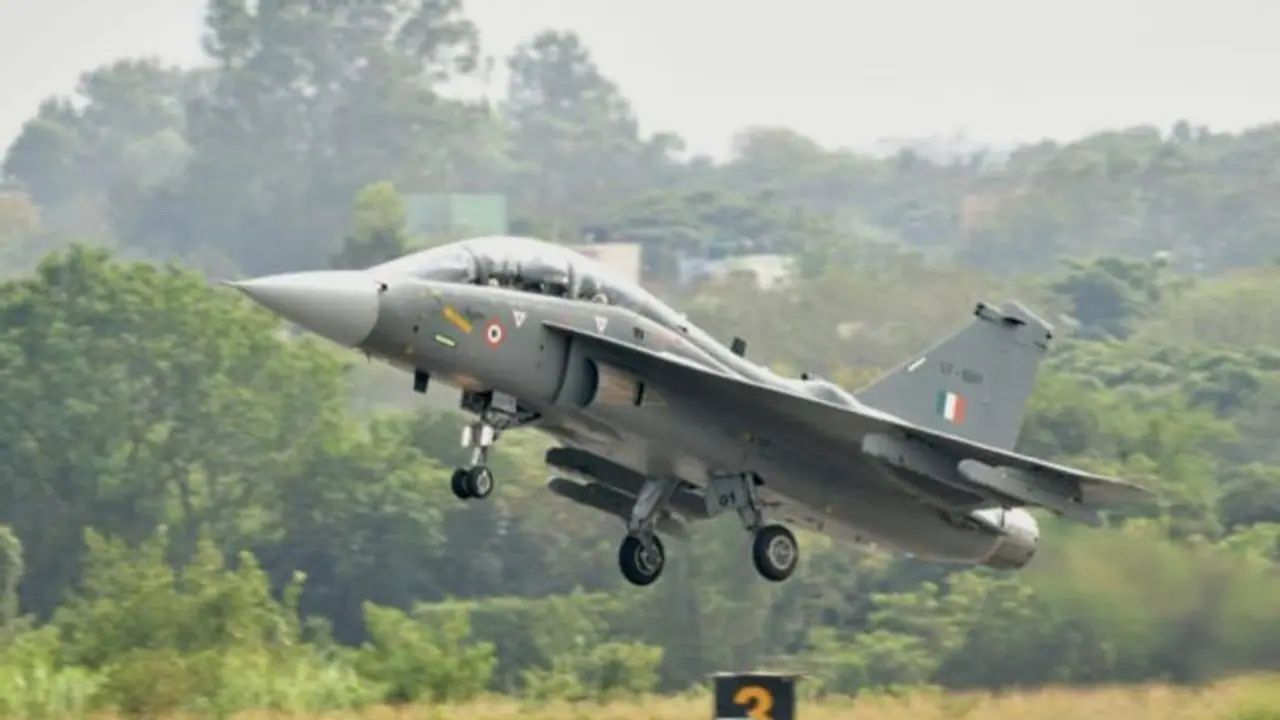This development will enable Light Combat Aircraft Tejas pilots to gain experience in mountain warfare, which differs from the plains and plateaus in South and Western India, Aerospace & Defence Analyst Girish Linganna said
The Tejas, India's indigenous Light Combat Aircraft (LCA), holds the distinction of being the world's most compact 4.5 generation fighter aircraft. The Indian Air Force (IAF) has introduced the domestically-built LCA Tejas in the Kashmir valley, marking its debut in the high mountainous region of India.

On Sunday, 30 July 2023, the IAF announced that the decision to relocate the locally-manufactured combat aircraft fleet from south India to the northernmost parts of the nation was driven by operational necessities. This development will enable LCA Tejas pilots to gain experience in mountain warfare, which differs from the plains and plateaus in South and Western India.
Given the IAF's shortage of fighter jets resulting from the phase-out of Soviet-era MIG-21s by 2025, the LCA Tejas is poised to become the mainstay of its squadron fleet, aligning with the Indian government's focus on domestically-produced military equipment.
Tejas: Role in Military Operations
As per Hindustan Aeronautics Limited (HAL), the LCA Tejas is a versatile warplane classified as 'multi-role', engineered to excel in diverse weather conditions. The Indian defence giant also affirms that the LCA Tejas is designed to fulfil various combat roles, including ground attacks, offensive air operations against enemy aircraft, and executing maritime missions on the seas.
With a range of advanced features, the LCA Tejas is well-equipped to achieve aerial dominance in battles against rival jets. According to HAL's website, the Tejas comes with several advanced features, like AESA Radar for better detection, an EW suite that includes radar warning and self-protection jamming, a Digital Map Generator (DMG) for navigation, Smart Multi-function Displays (SMFD) for enhanced information display, Combined Interrogator and Transponder (CIT) for communication, and an Advanced Radio Altimeter. These features contribute to the aircraft's capability in dominating battles against other jets.
Distinctive Features of Tejas
India's indigenous warplane has the ability to reach a maximum speed of 1.6 Mach (1975 km/h) and boasts a payload capacity of 13,500 kg. The LCA Tejas is capable of launching missiles from altitudes of up to 15 kilometres, which includes:
- Air-to-air missiles like R-73 and ASRAAM
- Air-to-surface missiles like BrahMos-NG, Anti-radiation missile Rudram-1, and AASM-Hammer
- Anti-ship missiles like Kh-35.
The 'Make in India' fighter jet has the capability to utilize a diverse range of weaponry, effectively targeting adversary bunkers, hide-outs, arms and ammunition depots, and even aircraft bases.
The fighter jet is equipped to fire Long Range Beyond Visual Range (BVR) weapons, which means it can engage targets that are beyond the pilot's direct line of sight. Additionally, it can utilize Within Visual Range (WVR) weapons, enabling it to engage targets within the pilot's direct line of sight. These capabilities allow the aircraft to effectively engage adversaries at varying distances with different degrees of visibility.
Tejas Aircraft in India
Currently, the IAF operates three distinct aircraft models, namely Mark 1, Mark 1A, and a training variant. Back in 2021, the Indian Defence Ministry secured a multi-billion dollar contract with the HAL for 83 LCA Mk-1A aircraft. As of April 2023, the HAL has already delivered 40 MK-1 jets to the Indian Air Force.
The LCA MK-1A represents an upgraded version of Tejas' initial variant, lacking advanced avionics and other essential features required for modern warfare.
In contrast to its earlier version, the HAL states that the LCA Tejas Mk-1A is equipped with a 'network warfare system'. This system includes essential components like software-defined radio (SDR) for communication, an electronic warfare system for defensive measures, beyond visual range (BVR) missiles for extended reach, and an advanced electronically scanned array (AESA) for improved radar capabilities. These additions enhance the aircraft's performance and combat effectiveness.
The HAL is currently working on the development of a Medium Weight Fighter (MWF), known as the LCA Mk2, which is intended for the Indian Air Force. The aircraft's maiden flight is scheduled for 2025.
